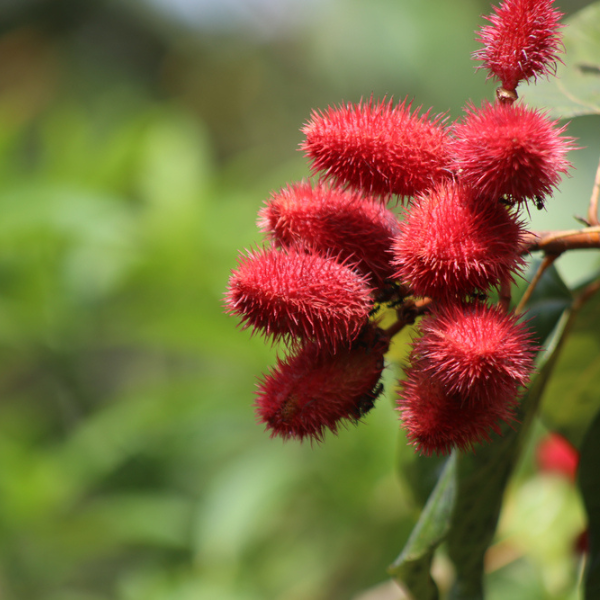It's possible that you haven't heard of the small ornamental plant known as the annatto or lipstick plant if you haven't done any research on annatto achiote. It's a tropical plant with very peculiar fruit that's used to make food coloring, and it grows in the tropics. Continue reading for more information, including instructions on how to grow an achiote tree. With relative ease, this can be added to your own gardening regimen.
Growing Conditions For Achiote
Temperatures ranging from 28 to 32 degrees Celsius during the day and 20 to 24 degrees Celsius during the night are considered to be the optimal conditions for the cultivation of achiote. The amount of water used for irrigation should be restricted to just what is necessary to maintain a moist soil.
The achiote is a type of tropical plant that is indigenous to Mexico, as well as Central America and South America. Planting seeds or seedlings of achiote trees in a location that receives full light and has soil that is naturally rich and well-drained is the best way to increase the likelihood that the trees will grow into healthy specimens.
The plant can reach a height of three to five feet and produces stunning flowers in the shape of bells in red color. The plant's seeds are ground up to produce a crimson powder that is utilized in the culinary industry as a coloring and flavoring enhancer.
A potting mix for achiote that includes two parts peat moss and one part perlite can be used for the plant's cultivation. The soil ought to be kept moist, but not completely saturated with water. There is also the possibility of cultivating achiote in a hydroponic environment.

How To Grow Achiote Plants
Although it is possible to grow the tree from seeds, the most frequent method of propagation is to root cuttings. After about 2 years have passed since the tree was planted, it will start to bear fruit once it has reached full maturity. The fruits can normally be picked between the months of December and May.
The Achiote tree is not difficult to propagate from seedlings or cuttings, and it is adaptable enough to thrive in a wide variety of soils. It does not perform well in shadow and requires a sunny site if it is to thrive. You can buy the seeds of the plant either whole or crushed, and they are frequently utilized in the food industry as a coloring agent or spice. Both seeds and cuttings of stems can be used to start new plants of achiote.
If you want to cultivate achiote from seed, you need to place the seeds in potting mix that has good drainage and keep them moist until the seeds germinate. When the seedlings have developed two complete sets of true leaves, it is safe to transplant them into their own individual pots. Find several healthy, non-flowering stems to use for stem cuttings, and then cut those stems into parts that are about three to four inches long.
When the cuttings have not yet rooted, place them in potting soil and be sure to keep them moist. After the plants' roots have established themselves, they can be moved into their own pots and grown on. Achiote plants will blossom in the late summer or the early fall if they are properly cared for. The flowers, which are often white or yellow, are followed by spiny fruits that hold the plant's seeds after they have passed away.
Care & Maintenance
The following are some suggestions that will help you cultivate an achiote plant successfully:
- The Achiote plant does best when grown in full sun and on soil that drains properly. It is essential that you put it in a spot that will get a lot of sunshine.
- Be sure to give the achiote plant consistent watering, ensuring that the soil is kept moist but not soaked. Before you water the soil again, give the top inch of the soil a chance to dry out.
- It is recommended that a high-quality fertilizer be used once every month to the achiote plant.
- To promote fuller, bushier growth on the achiote plant, pinch off the growing tips of the plant.
- To ensure the production of fruit, you will need to use a very fine paintbrush or a cotton swab to pollinate the Achiote blossoms.

Harvesting Achiote
After some time has passed, the petals will wither, and the seeds will form inside of crimson-colored capsules or pods that resemble chestnut burs. In order to harvest achiote, one must first bag the seed heads in order to collect the maturing seeds, then allow the seed heads to dry while still attached to the plants, and finally remove the seed heads and collect the seeds after they have dried.
The Achiote tree has fruit that is typically under 5 centimeters (1 inch) in diameter and is bright red in color. Annatto, a red dye, is made from the fruit's seeds, which are also used to manufacture the color itself. Curry meals, soups, and stews can all benefit from the flavor and color that the achiote fruit brings to the table. The achiote tree is farmed commercially in various regions across the world.

